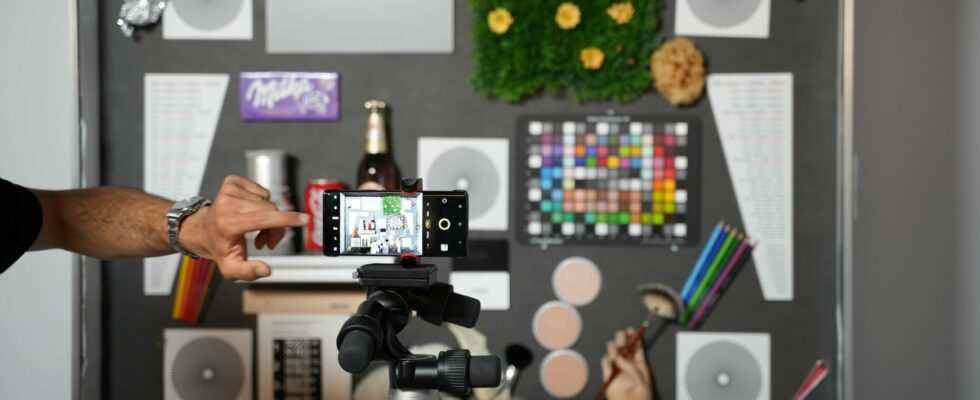Vivo called on the German optical manufacturer Zeiss for its X80 Pro. We explain to you in concrete terms what this partnership was able to bring and what their approach was.
marketing bullshit or real good news for your shots? The partnership between Zeiss and Vivo, like that of Hasselblad with Oppo and OnePlus or Leica with Xiaomi, raises many questions.
During a meeting with Zeiss engineers, we were able to better understand what the Chinese smartphone brand got out of this partnership. Because neither the lenses nor the optics were manufactured by the German image specialist. No, its role is elsewhere. This is to provide expertise in three areas (among others): color quality, definition and anti-reflective coatings. We offer here a small overview of the three.
Keep in mind that everything shown to us here is not a trade secret and therefore there is reason to believe that it is only the tip of the iceberg. Nevertheless, these elements help to better understand the approach of optical specialists who work on smartphones.
A can of Coca-Cola and a Milka tablet to test the colors
The first tool used by the Zeiss engineers that we wanted to show you is a simple box allowing certain colors to be reproduced faithfully and whose illumination can be varied. Here, for the example, Zeiss showed us a box allowing us to test 18 colors. The interest is to see how much the colors vary when the lighting warms up for example. Green, for example, tends to vary little. It is on this basis that the engineers will be able to work.
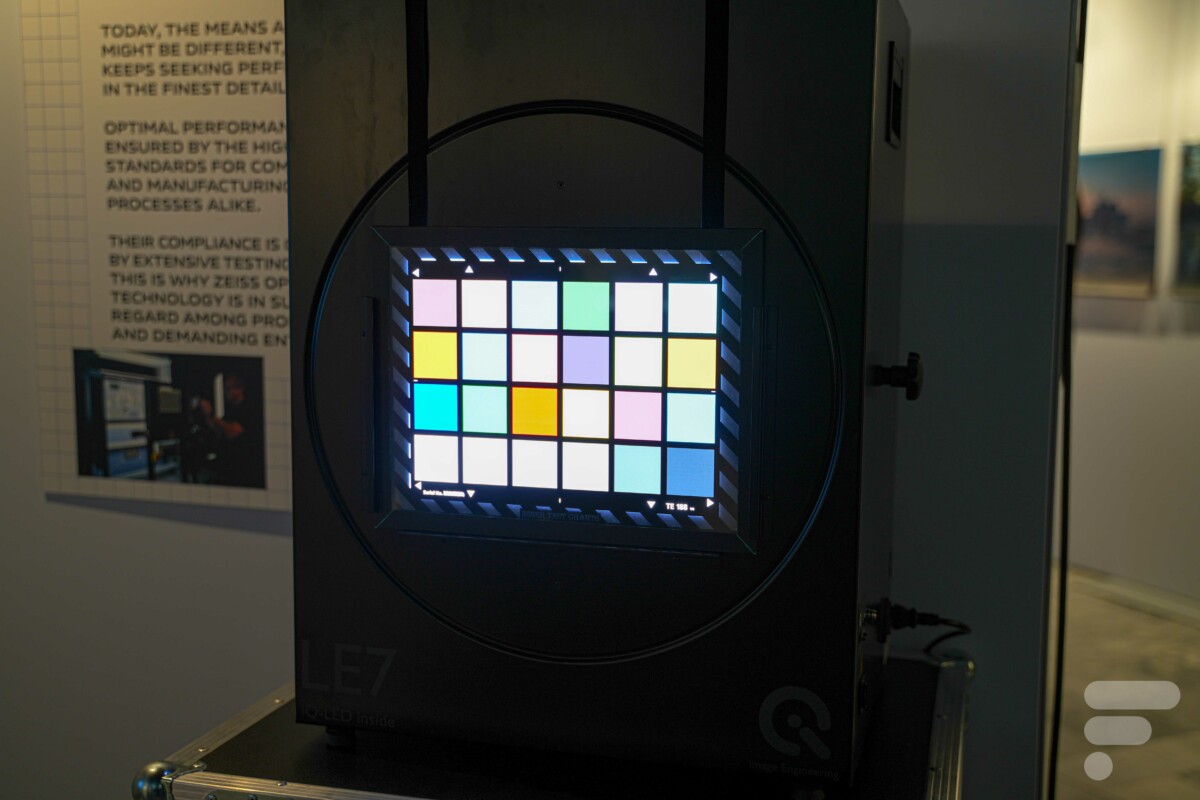
“What we’re trying to replicate is not a physical measurement of color, it’s a combination of illumination and how the eye receives color”explains David Abreu, engineer at Zeiss, during a meeting with the press. Frandroid participated in it.
Then comes a second test, still on color, an oh-so-important subject. It begins in a curious way with a painting containing in particular a can of Coca-Cola, a piece of lawn or even a bar of Milka chocolate. If this sounds a bit farcical, it’s actually very serious.
” There are so-called memory colorssays the Zeiss engineer. These are colors that we know users are going to have expectations of. They are also the ones who will jump out at you immediately. »
We are thinking here, for example, of the green of the grass, the purple of the chocolate bar or the characteristic red of the can. Beyond the anecdote, these are colors anchored in everyone’s memory. Moreover, the engineer is transformed for a time into a philosopher when he explains to us: “People remember these colors well, but not necessarily in the same way as what you actually see in the scene. There can also be variations between regions of the world. It’s something we measured. » That’s why Vivo has decided to leave the choice between natural colors (called Zeiss colors) or those a little more flashy, but sought after by the greatest number.
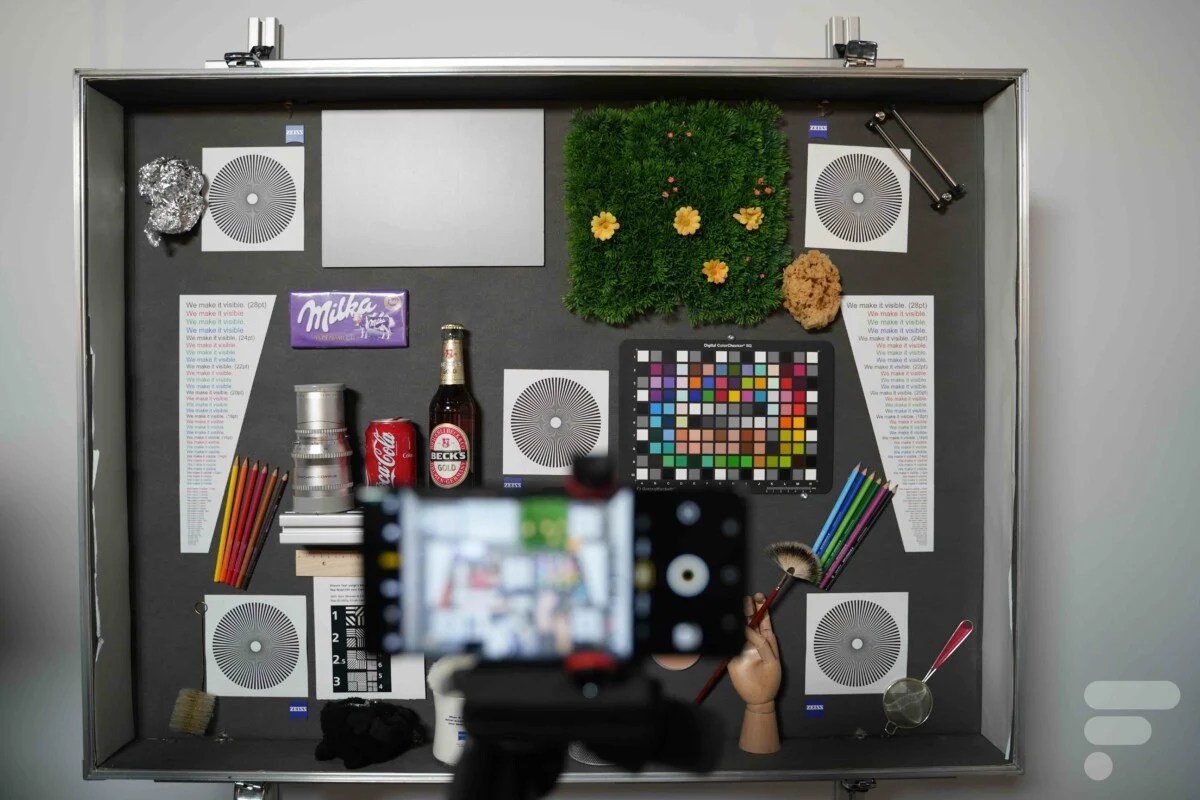
Other objects in this painting respond to a different problem. We have, for example, a sheet of aluminum foil which makes it possible to ” test very localized light sources with high intensity“, further details David Abreu. We can also distinguish a brush, which makes it possible to measure the reproduction of details well.
How to test the definition
Zeiss engineers also showed us how they test the definition of an image. The goal is simple: to avoid deformations as much as possible. The test is based this time on a set of circles with black and white stripes. The goal being that the closer we get to the center of the circle, the more the definition will be complicated to distinguish.
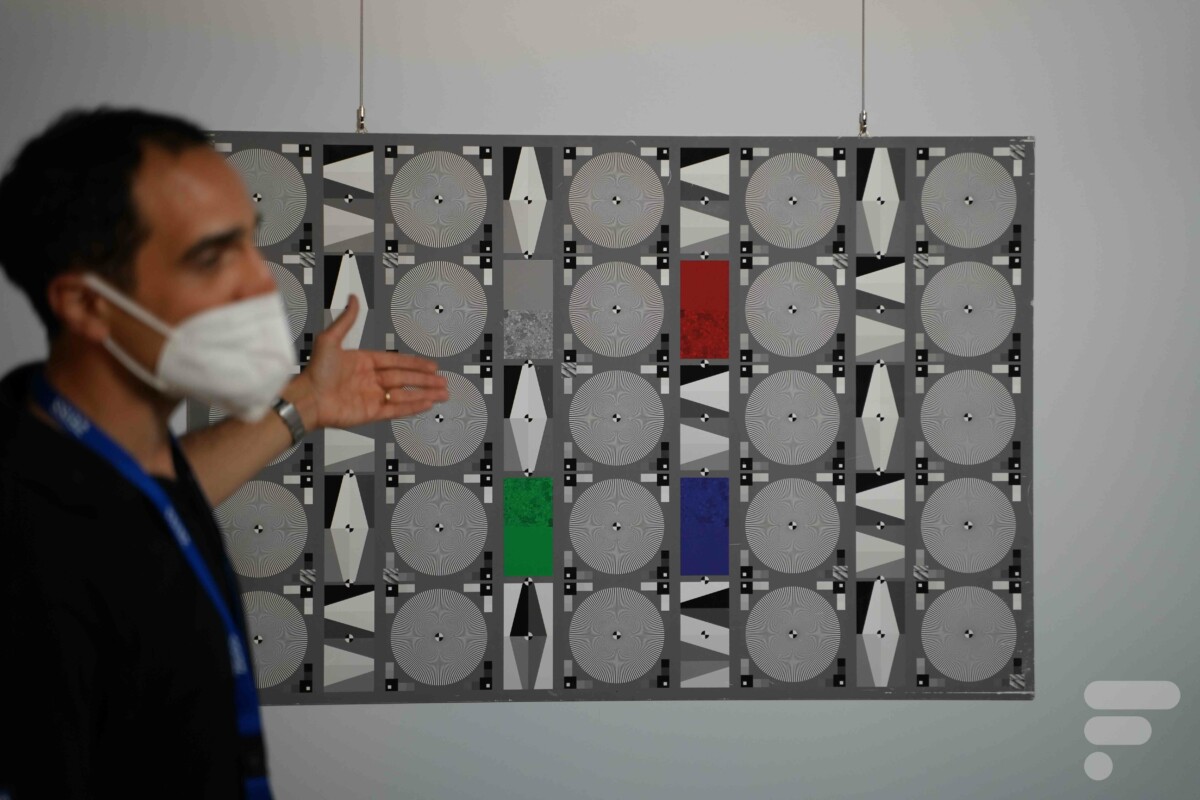
The other interest of this test is that it allows to distinguish if there is an asymmetry or problems on the edges of the image. Indeed, it is not difficult to notice an anomaly on perfect lines.
Anti-reflective coating to play with light
If you’ve taken a good look at the back of the latest Vivo X80 Pro, you may have noticed a strange red “T*” symbol.
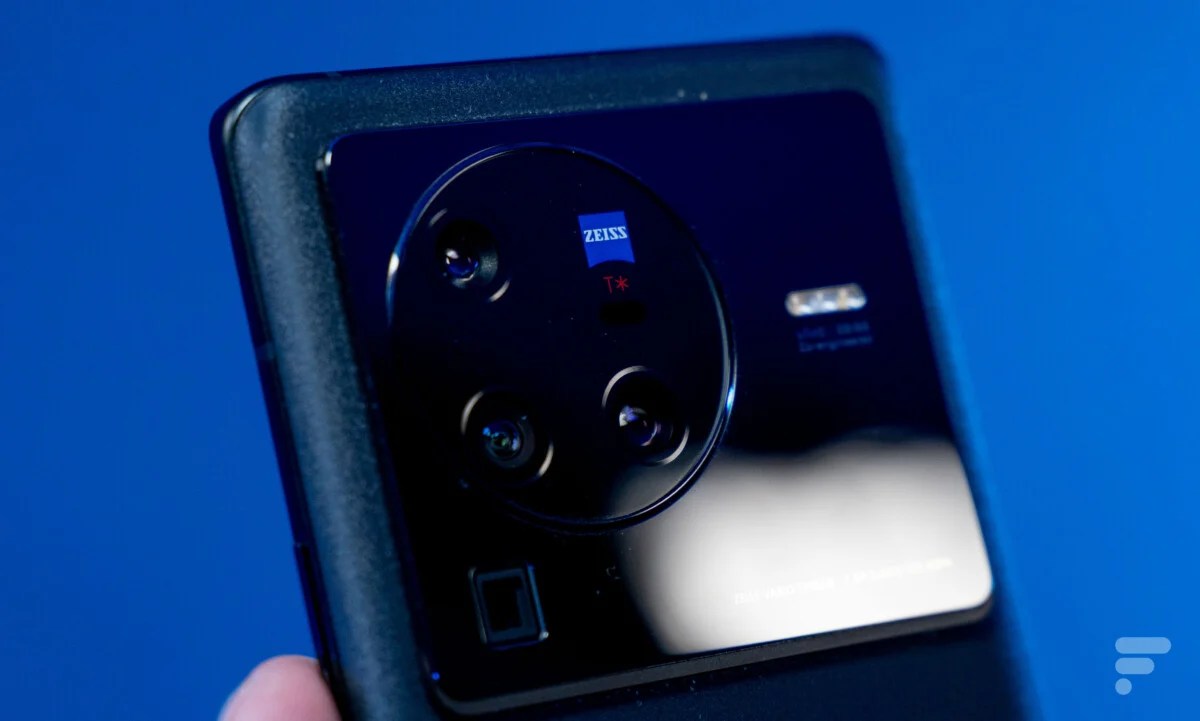
The presence of this T* is intended to inform the consumer that the lenses of this device are covered with a special coating. Coating consists of applying a very thin layer (less than one µm) of a very specific texture to a lens.
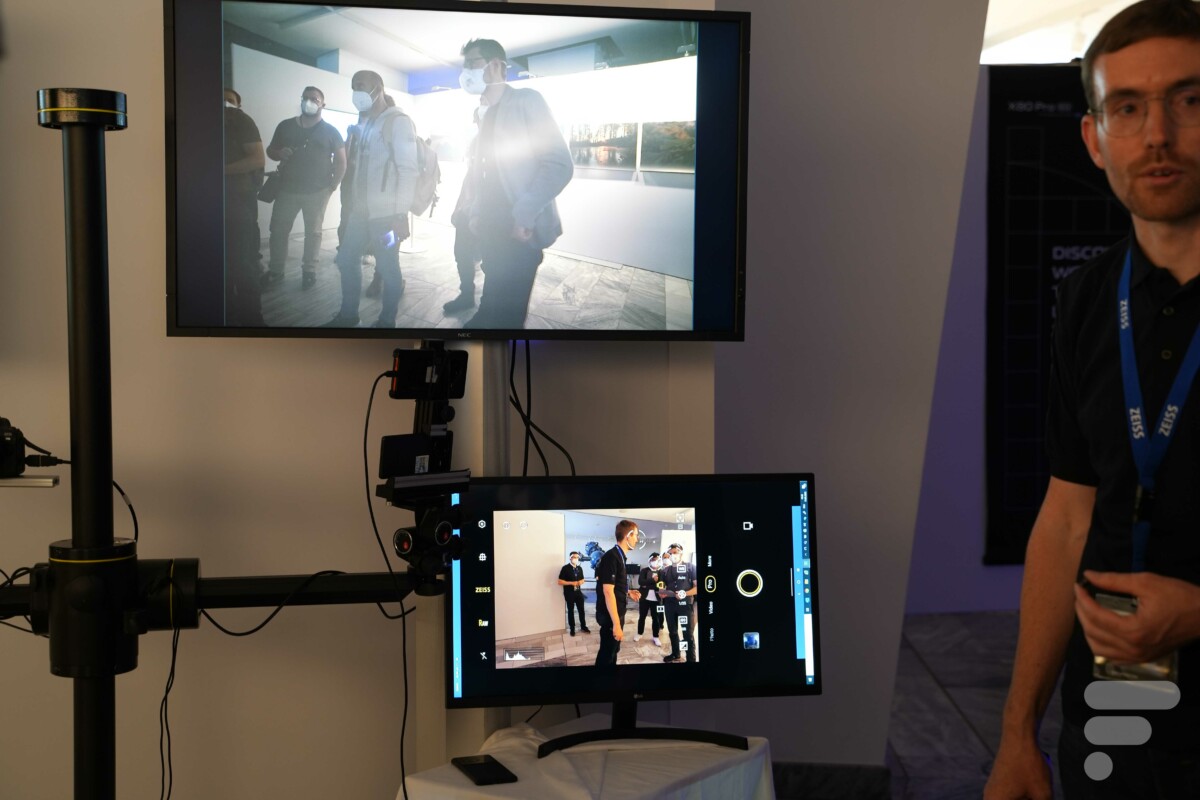
Its purpose is essentially to reduce the reflections created by the lenses. It sounds simple like that, but it’s a big problem. “On any lens, you have 95% of the light going through. You could say ‘it’s not that bad’, but the problem is when you start placing several in a row. » We can for example have a lens in the middle of all the others which reflects 5% of its light towards the one before, which returns towards the one after, and so on.
This is also how we obtain alens flarethis famous effect so dear to JJ Abrams, director ofStar Warsepisode 7. When this is mastered, there can be some aesthetics to it, but overall it’s a flaw in an image that Zeiss promises to correct by applying a coating to the lenses.
Glare reduction has other virtues. One thinks for example of a considerable increase in contrasts, because the quantity of diffuse light in the image is better controlled.
What is the difference with Leica and Hasselblad?
This work on the lens, even if it is content to add a small coating, seems to us for once a specificity of the partnership between Zeiss and Vivo. To our knowledge, Hasselblad is content to help Oppo and OnePlus with color calibration while the exact scope of the partnership between Leica and Xiaomi is not yet known.
On the other hand, it is likely that the color procedures or the definition that we have just presented to you are generally the same with other manufacturers. Let’s add that many manufacturers like Samsung, Apple or Honor do not use such partnerships, which does not prevent them from being well placed in the various rankings of the best photophones.
NB. This article was written as part of a press trip organized by Vivo to Berlin, with Zeiss teams.
To follow us, we invite you to download our Android and iOS application. You can read our articles, files, and watch our latest YouTube videos.
